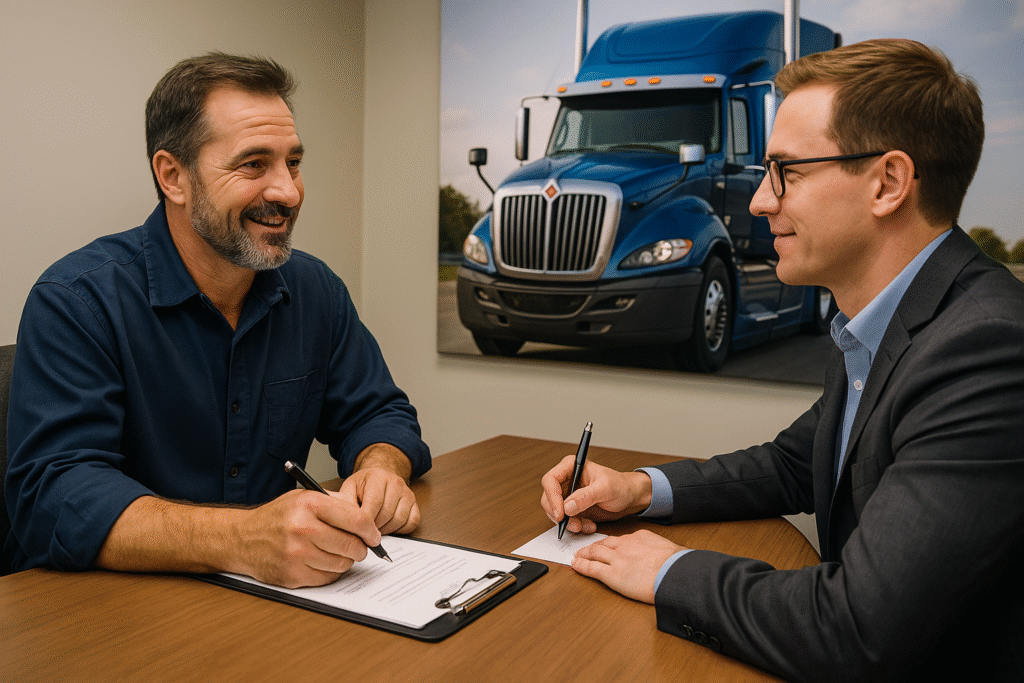Understanding the Recruitment Marketing Funnel
As the battle for human resources is won through ingenious tactics, the logistics professionals and trucking companies hiring truck drivers and back-office staff must foremost rethink their approaches to attracting and retaining talent. An intelligently designed recruitment marketing funnel is a powerful tool through which far-seeing companies can easily convert casual job seekers to committed employees. Similar to the sales funnel used in business, the recruitment funnel stages from awareness to onboarding are arranged to help organizations build a solid talent pipeline and also, improve candidate engagement and hiring process. The employer can use talent acquisition methods, recruitment marketing strategies and the latest recruitment marketing tools to ensure candidates have a seamless journey while sticking to their employer branding and employer value proposition.
The Recruitment Marketing Funnel Stages
Awareness
Awareness stage is when would-be candidates are getting the first information about your organization. For example, this can come from social media ads that the trucking firms and logistics employers do showing shiny truck fleets, job boards that Class A CDL positions are highlighted, or these could also be through driver referral programs from the current drivers. The main focus in this phase is on employer branding where the message is that you are a trusted company that offers a safe and rewarding work environment through a clear recruitment strategy.
Attraction
The first step of the attraction channel is to make sure job seekers get hooked in the first place, secondly, attraction operations work to pull them to the next step further into the funnel. These attraction tactics highlight the most powerful solutions for companies, like attention-grabbing job postings, employee stories, and engaging content about the candidate experience. It is crucial for the employers to show their employer value proposition such as tips for getting the best pay, newest truck models, or doubtless flexible hours.
Interest
At the interest generation stage, candidates begin shuffling through the company information. They might visit your company website, study documents on sourcing channels, or work with marketing tools such as the chatbots online in advertisements. The best practices of marketing for recruitment during this stage suggest that employers should nurture candidate engagement with educative content, visible career alternatives, and distinctly defined employer branding.
Application
The application process should be as fast as quantum and compatible with mobile devices, applicant tracking system integrated. The drivers that choose to apply for truck driving positions should be able to attach documents such as licenses, safety certificates, and their work history promptly through the system. Therefore, the primary step in the application process is making things simple and user friendly hence avoiding the drop-outs and keeping your pipeline healthy.
Consideration
At this consideration phase, candidates estimate the possibilities and recruiters review the CVs. In this case, openness about salary rates, driving policies, and chances of progress in the trucking subsector strengthens the cues about the ideal candidates. Strong candidate sourcing practices are vital here. The candidate journey design at this stage needs to create an impression of trust, where the employer’s concern about their time is emphasized.
Selection and Interviewing Process

While during the selection interview, both employer and candidate evaluate to fit the candidate. The interview experience matters, whether it is a virtual interview for dispatchers or an in-person driving test for truck operators. The hiring managers should choose the right metrics to align with the interview process to assess fairness, speed, and the quality of hires.
Offer and Onboarding
Lastly, the offer negotiation and onboarding experiences are what all the pieces in the funnel are built on. The candidates should receive clear communication regarding salary, benefits, and training timelines to increase their retention. Moreover, effective onboarding initiatives let new staff, be it drivers or office, see themselves as part of the company culture. A convincing start of employment supports recruitment marketing and can lead to successful programs in the future.

Ways to Boost Every Stage
Creating a Robust Employer Brand
Employer branding is the strengthening force in talent acquisition. For instance, truckers have to unfold their history of modern trucks, their safety-first belief alongside the career development systems that are available. A strong employer value proposition is the dressing difference in the sweater that makes you stand out in the job market.
Developing Magnetic Job Descriptions
A solid job description is a precious tactic in recruitment marketing. They must be detailed, honest, and captivating so that they reflect the best practices in marketing for recruitment. Transparency regarding roles, pay, and perks yields a healthy candidate sourcing and expansion of job offers, thus bringing in new channels like job boards and social media and so on.
Application Process Simplification

The one factor that puts the applicant’s attention upwards is the user-friendliness of the applications. If it becomes complicated to apply for the program, that could mean losing potential talent. So, the streamlining of the format, integration with an applicant tracking system, and fully mobile options are the correct occurrences. By giving truck drivers platform freedom plus options for speedy document submissions, the process of hiring becomes a smooth journey from the start to the end.
Implementing Candidate Relationship Management (CRM)
The beginning of the change either is when CRM systems manage the candidate interaction or at least invest in it. They allow recruiters to facilitate relationships, provide information promptly and customize the recruitment operation. The storing of candidate information and the management of relationships, which are the key factors in strengthening referral programs, build a long-term talent pipeline.
Using Data Analytics for Permanent Improvement
Recruitment metrics are elements of recruitment marketing’s advancement. Monitoring hurdles in hiring, such as time-to-fill, cost-per-hire, and candidate retention indicators, enables firms to position themselves better in the market. Moreover, using the right data analytics, the companies will find the best-performing recruitment channels and will be able to apply recruitment marketing best practices accordingly.
Mistakes and the Way to Avoid Them

The Complexity of the Application — How to Avoid It
The biggest mistake done is making the application process a little longer or confusing for the applicants. Candidates may just drop it if the procedures, which are time-consuming, are not streamlined. Employers should not forget to create a positive candidate experience to prioritize this, they need to integrate the applicant tracking system, along with job descriptions that are concise but informative.
Not Caring for the Candidate Experience
Candidate experience is a thing that can not be denied it can suppress employees’ productivity and create a bad name for the firm. The whole candidate journey, from the raising of awareness to the onboarding experience, should be based on the principles of respect and openness in every case. The employers, who mismanage this area, can end up with poor employer branding and not attracting talents.
Setting Clear Metrics
Without recruitment metrics and hiring funnel metrics, the ability to measure success is zero. Tracking key performance indicators such as source effectiveness, time-to-hire, and candidate retention is crucial for employers. Regular reporting is recommended by the marketing of practice’s loading needs to be synchronized with business objectives.
Wrapping Up with the Main Points

Mastering the recruitment marketing funnel is about the organization turning the hunt for talent into a thought-through strategic process rather than just a one-off action. Each sector pressure from the awareness phase through to the onboarding experience of a candidate needs unique recruitment strategy, superior recruitment, and long-lasting candidate engagement. Focus on standard employer branding, reliable sourcing channels, and simple application procedures.
Final Thoughts on the Efficient Recruitment Marketing Funnel Creation
In trucking and logistics sectors, which are still not fully staffed with skilled truck drivers, success means more than just occupying positions. An intelligently devised recruitment route underpinned by data-backed metrics presents a steadfast employer value proposition, and continuously implements candidate retention measures. Discussing the advantages of simplifying the application process or neglecting the candidate experience, entities can create a recruitment funnel that will not only fill the company with the right people but will also ensure the longevity of the workforce.
A successful marketing recruitment funnel, however, can turn the hiring process into a simple, predictable, and efficient system. The process will then be able to deliver better quality employees, produce stronger referral plays, and, as a result, replenish the talent pipeline for several years ahead.

No Responses